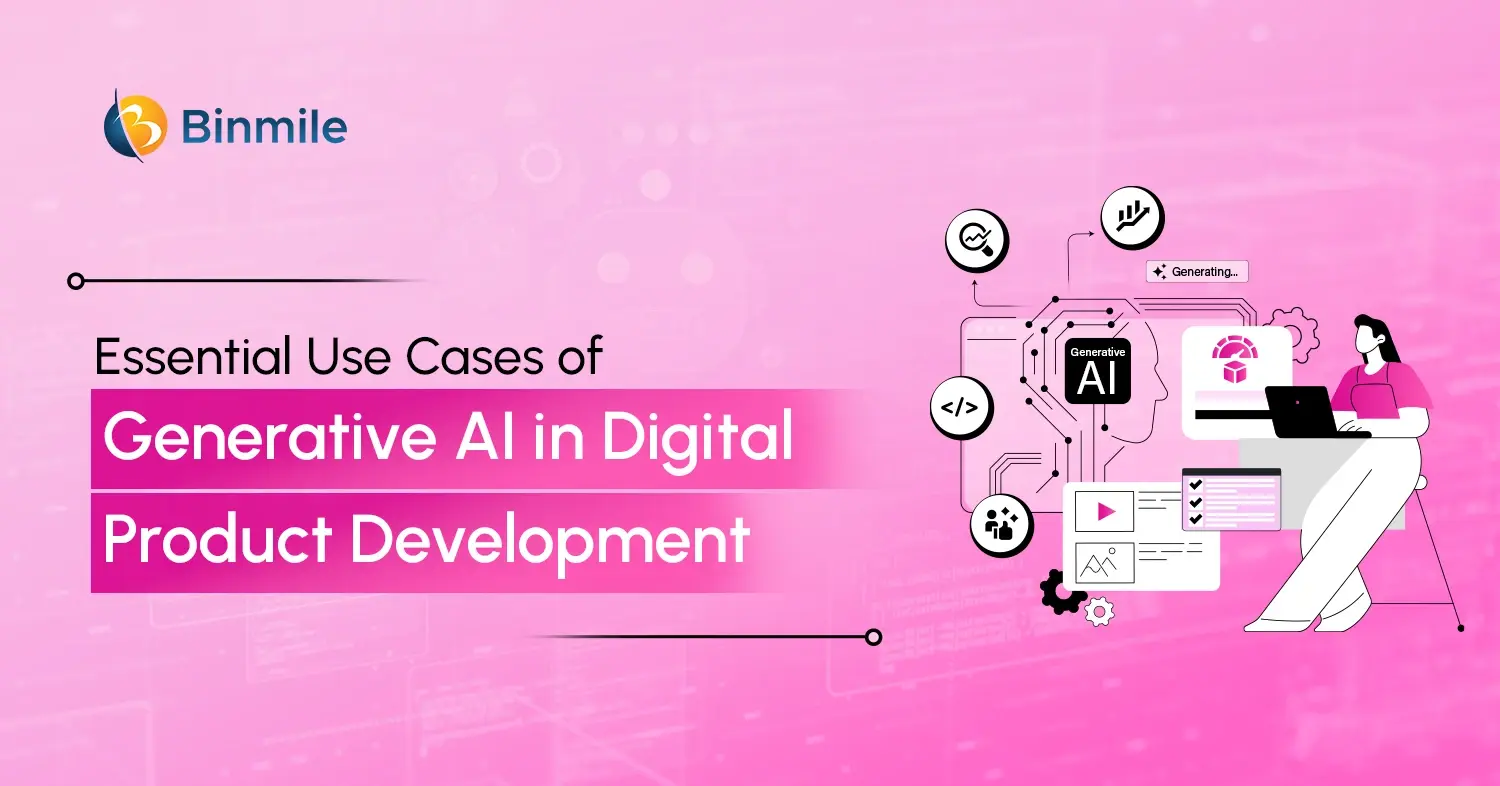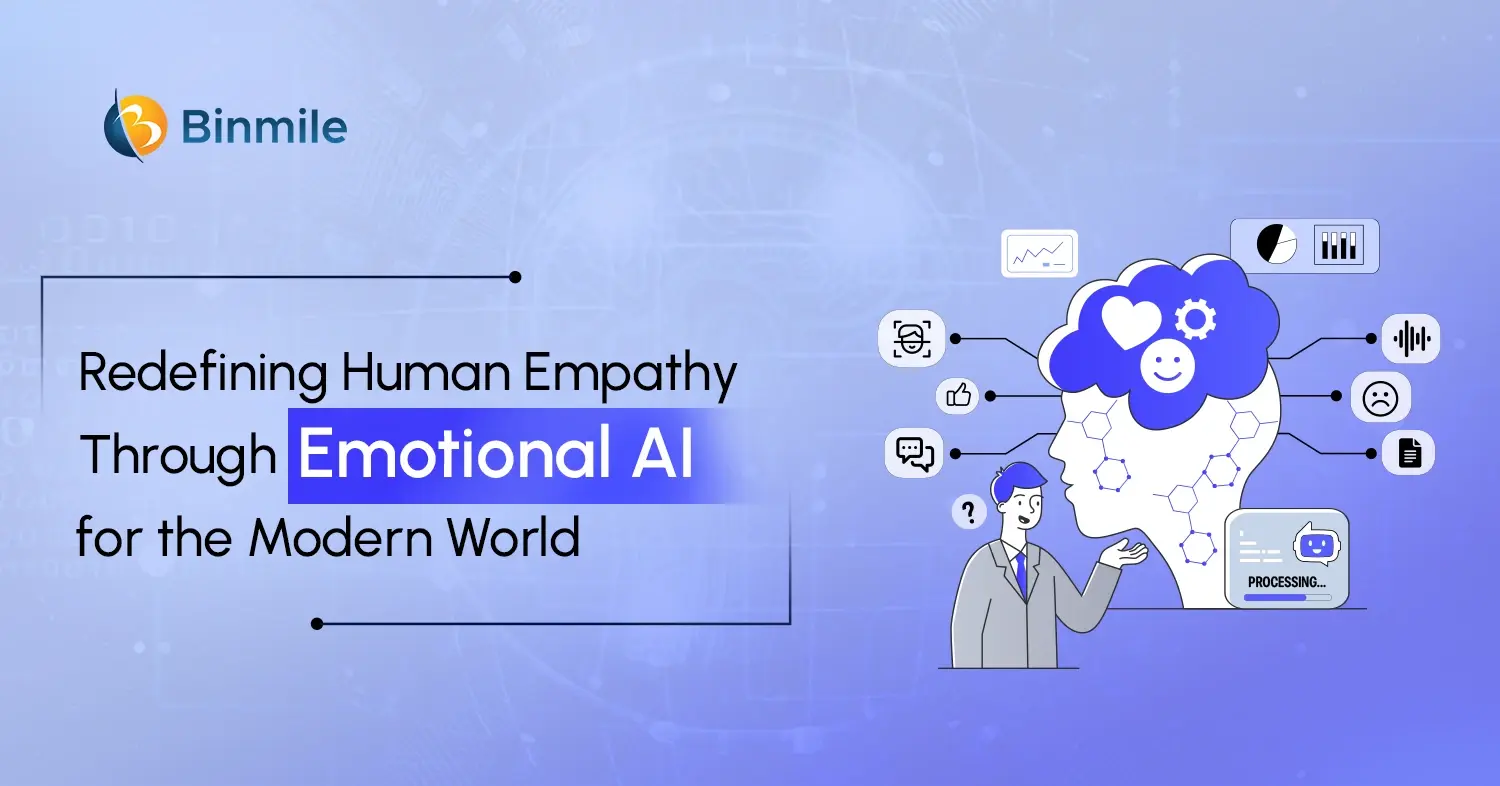With the advent of artificial intelligence, the software development process is undergoing transformative changes. From automating code generation to optimizing testing and deployment, AI in software development is changing the way software is developed and deployed. Additionally, AI technologies have the potential to contribute a staggering $13 trillion to the global economy by 2030. However, building these systems isn’t just about good ideas—it’s also about using the right tools or AI programming languages.
Selecting and understanding the programming language is essential for determining how quickly you can develop, how well your system performs, and what kind of AI solutions you can create. Each language boasts its unique strengths and applications, pushing the boundaries of what is achievable. So, let’s discuss in this blog the best seven programming languages for AI and machine learning, why each one stands out, what it’s good at, and where it’s being used today. In addition, we’ll also cover a few tips on how to select the best AI programming languages so that you have an effective and successful AI-driven development.
Future of AI Development: Key Programming Languages You Need to Know
Different programming languages for AI and machine learning have distinct use cases and key features. So, let’s explore the best AI programming languages propelling today’s AI advancements!
Python: The Unrivaled Champion of AI Development

Python reigns supreme as the preeminent language in outsourced AI development, owing to its versatility, readability, and robust library ecosystem. According to recent findings by the TIOBE Index, Python remains one of the most popular programming languages for AI and machine learning globally, with a steady upward trend in adoption. A study conducted by the International Data Corporation (IDC) found that Python emerged as the top choice of language for data science and AI projects, with 66% of data scientists endorsing its use.
Key Features:
- An extensive ecosystem of specialized AI libraries and frameworks, including TensorFlow, PyTorch, and scikit-learn.
- Simple, readable syntax that accelerates the development and prototyping of complex AI models.
- Outstanding community support with comprehensive documentation and tutorials for AI applications.
- Seamless integration with data visualization tools like Matplotlib and Seaborn for model analysis.
- Native support for Jupyter notebooks enables interactive development and experimentation.
Why Choose Python as AI Programming Languages:
- Ideal for rapid prototyping and iterative development of AI models
- Perfect for beginners due to its gentle learning curve
- Excels at data preprocessing and manipulation tasks
- Offers the broadest range of pre-built AI algorithms and models
- Integrates easily with production systems through fra
- meworks like Flask and Django
Java: Powering Scalability and Enterprise AI Solutions

According to a survey by JetBrains, Java remains the best AI programming language for developing AI-driven enterprise applications, with 47% of respondents leveraging its capabilities. Furthermore, Java’s seamless integration with big data technologies, such as Apache Hadoop and Spark, positions it as a linchpin in harnessing the vast troves of data crucial for ethical AI model training and inference.
Key Features:
- Superior scalability for enterprise-level AI applications handling large user bases.
- Strong type safety that reduces runtime errors in complex AI systems.
- Exceptional cross-platform compatibility through the JVM for consistent AI deployment.
- Powerful libraries like Deeplearning4j and Weka for robust machine learning implementations.
- Seamless integration with big data technologies like Hadoop and Spark for AI at scale.
Why Choose Java AI Programming Languages:
- Best for enterprise environments requiring stable, maintainable AI systems
- Excellent for AI applications that need to process massive amounts of data
- Superior for multi-threaded applications and parallel processing
- Provides better security features for sensitive AI applications
- Offers strong performance for production-ready AI systems
SQL: Unveiling Insights Through Data Analytics

Structured Query Language (SQL) emerges as a vital cog in the AI machinery, facilitating seamless data retrieval, manipulation, and analysis. According to the Stack Overflow Developer Survey 2023, SQL remains a cornerstone skill for AI and data professionals, with 60% of respondents acknowledging its significance.
SQL’s efficacy in handling relational databases makes it indispensable for AI applications reliant on structured data, such as predictive analytics and recommendation systems.
Key Features:
- Powerful querying capabilities for extracting and transforming structured data for AI models.
- Built-in aggregation functions that streamline feature engineering processes.
- Optimization for handling relational data is crucial for many business AI applications.
- Integration with database management systems to store training data for AI systems.
- Support for window functions enabling complex time-series analysis for predictive models.
Why Choose SQL as AI Programming Languages:
- Essential for AI projects that are heavily dependent on relational database data
- Optimizes data preprocessing and feature selection workflows
- Reduces data transfer overhead by processing data where it lives
- Enables complex data transformations without additional programming
- Provides consistent data access patterns across different AI applications
C++: The Backbone of High-Performance AI Computing

C++ stands as a top AI programming languages in AI development, revered for its unparalleled performance and efficiency. According to a study by GitHub, C++ ranks among the top languages favored by AI developers for performance-critical tasks, including computer vision and real-time processing.
It is crucial for building AI applications that demand speed and computational prowess. C++’s enduring legacy in gaming and embedded systems further cements its position as a cornerstone language for AI innovation.
Key Features:
- Unmatched execution speed for performance-critical AI components and algorithms.
- Low-level memory management for optimizing resource-intensive deep learning operations.
- Direct hardware access capabilities are crucial for integrating GPUs and specialized AI accelerators.
- Extensive libraries like OpenCV and Dlib powering advanced computer vision applications.
- Compatibility with embedded systems for deploying AI in resource-constrained environments.
Why Choose C++ AI Programming Languages:
- Necessary for real-time AI applications where milliseconds matter
- Optimal for computer vision and image processing applications
- Essential for embedded AI systems with limited computational resources
- Best choice when maximum computational efficiency is required
- Provides granular control over hardware acceleration for AI models
R: Empowering Statistical Analysis and Machine Learning

R is celebrated for its rich ecosystem of packages and visualization tools in the realm of statistical computing and machine learning. According to the R Consortium’s survey, R commands a dedicated following among statisticians and data scientists, with 75% of respondents affirming its relevance in their workflows.
R’s emphasis on statistical modeling and exploratory data analysis makes it indispensable for AI applications that require in-depth statistical insights, such as predictive modeling and anomaly detection.
Key Features:
- Specialized statistical functions and packages are designed specifically for statistical learning models.
- Superior data visualization capabilities through ggplot2 for model interpretation and presentation.
- Built-in support for advanced statistical tests and analyses underpinning many AI techniques.
- The comprehensive ecosystem of packages, such as caret and mlr, for automated machine learning workflows.
- RStudio’s interactive development environment is optimized for statistical analysis and modeling.
Why Choose R AI Programming Languages:
- Preferred for statistical modeling and exploratory data analysis
- Excels at creating publication-quality visualizations of AI results
- Best for projects requiring rigorous statistical validation
- Offers streamlined implementation of specialized statistical learning algorithms
- Perfect for domains like biostatistics, finance, and social sciences
Julia: Unlocking High-Performance AI Computing

The Julia programming language offers a solution to scientific computing by seamlessly combining the benefits of high-level languages with the performance speed of low-level languages. Since its launch with version 1.0 in 2018, Julia has consistently attracted more users among researchers and engineers working in computationally demanding fields.
Julia has established itself as the leading technology for research-oriented AI tasks that require advanced numerical computation capabilities. This language is emerging as one of the top AI programming languages with its capabilities extending to modeling differential equations, performing quantum machine learning tasks, and conducting scientific numerical computations. The updated ecosystem enables users to perform deep learning with Flux.jl and machine learning activities with MLJ.jl. This makes the primary choice for developing advanced algorithms in computational research.
Key Features:
- High-performance mathematical computation combining the speed of C++ with the simplicity of Python.
- Native support for parallel and distributed computing is ideal for large-scale AI training and inference.
- A dynamic type system optimized for scientific and numerical computing, every day in AI.
- Metaprogramming capabilities enable the customization of AI algorithms for optimal performance.
- Direct integration with existing C, Python, and R codebases for leveraging legacy AI code.
Why Choose Julia AI Programming Languages:
- Excellent for AI applications requiring complex mathematical operations
- Ideal when combining Python-like productivity with C-like performance
- Perfect for high-performance computing environments and supercomputers
- Strong choice for custom optimization of complex AI algorithms
- Best for cutting-edge AI research requiring computational efficiency
Domain-Specific Languages (DSLs): A Strategic Approach to Specialized AI

Domain-specific languages (DSLs) develop specialized programming solutions that cater to the exclusive requirements of different AI application usages. What makes Domain-Specific Languages (DSLs) better than traditional programming languages is their domain-specific nature, which allows for more focused development. The abstraction from typical programming systems enables DSLs to allow experts in their fields to construct AI models using terms and structural elements specific to their domain.
For instance, both probabilistic programming languages: Stan and Pyro, together they create Bayesian modeling (it’s a type of graphical model that uses probability to determine the occurrence of an event.) easier. At the same time, TensorFlow establishes deep learning workflows through computational graphs. Specified AI applications benefit from Domain-Specific Languages (DSLs), which develop crucial points of contact between subject matter experts and developers, thereby accelerating innovation within focused areas of AI technology.
Key Features:
- Tailored syntax and semantics optimized for specific AI domains like natural language processing or computer vision.
- Abstracted complexity enables domain experts to develop AI solutions without requiring in-depth programming knowledge.
- Specialized operators and functions for common patterns in particular AI subfields.
- Optimized execution paths for domain-specific hardware accelerators and infrastructure.
- Streamlined workflows from data preparation to model deployment within a focused domain.
Why Choose DSLs AI Programming Languages:
- Maximizes productivity for specialized AI tasks within specific domains
- Reduces development time through higher-level abstractions
- Enables domain experts to implement AI solutions directly
- Provides optimized performance for specific types of AI applications
- Simplifies the maintenance of specialized AI systems in production
Top Tips for Selecting an AI Programming Language That Meets Your Needs
When selecting any top AI programming language we discussed earlier, consider these seven critical factors to align your choice with your project goals, technical requirements, and long-term growth:

1: Project Requirements and Use Case
Match the language’s strengths with your specific AI use case to ensure efficiency and success. Identify the primary focus of your AI project:
- For deep learning and natural language processing, Python is often the ideal choice.
- For high-performance, real-time AI systems (e.g., robotics or gaming), C++ might be a better fit.
- For enterprise-grade AI solutions or large-scale AI deployments, Java’s scalability is a standout feature.
2: Performance and Scalability Needs
Consider the language’s ability to handle execution speed, memory optimization, and scalability to support your AI system’s growth.
- For speed-critical tasks like computer vision or low-latency inference, languages like C++ or specialized frameworks in Julia can offer substantial advantages.
- For rapid prototyping and scalable cloud deployment, Python excels despite minor speed trade-offs.
3: Ease of Learning and Developer Productivity
Languages with simple syntax and rich documentation accelerate development and reduce time spent on onboarding and debugging.
- Python’s readable syntax and massive learning resources make it ideal for quick ramp-up.
- Java and C++, while powerful, have steeper learning curves, which could delay project milestones if the team lacks prior experience.
4: Ecosystem and Library Support
A rich ecosystem reduces development time, simplifies troubleshooting, and improves the reliability of AI models. So, go for the language that offers strong libraries, frameworks, and tools for AI development:
- Python: TensorFlow, PyTorch, Scikit-learn
- Java: Deeplearning4j, Weka
- R: caret, randomForest
5: Integration with Existing Systems
AI models rarely operate in isolation — they often need to integrate with legacy systems, cloud platforms, mobile apps, or IoT devices.
- Java’s compatibility with enterprise systems and big data platforms, such as Hadoop, can be a deciding factor.
- SQL’s essential role in querying databases ensures it fits naturally into data pipelines.
- Python’s flexibility through APIs and lightweight integration libraries makes it highly adaptable across varied system architectures.
6: Community Support and Talent Availability
A vibrant community ensures easy troubleshooting, ample resources, and access to a broader talent pool for your project.
- Python has one of the largest communities in AI and machine learning.
- SQL remains universally known, ensuring abundant support for data-driven AI projects.
- Choosing a language with a large pool of skilled developers can also ease future hiring if scaling a project or team.
7: Future Trends and Specialization
Choosing a forward-looking language can future-proof your skills and projects in specialized AI domains.
- Julia is gaining attention for high-performance numerical computing in AI research.
- Domain-specific languages (DSLs), such as Mojo, are being designed for AI/ML workflows with a focus on performance and modularity.
To Sum It Up
As we stand on the precipice of a new era defined by AI’s transformative potential, mastery of these foundational languages serves as a beacon guiding us toward a future brimming with boundless opportunities and discoveries in innovative AI development.
Above all, demonstrating your passion and desire to learn through real-world experience can help you distinguish yourself in the competitive field, with each language bringing its unique strengths to the table, propelling AI to new heights of ingenuity and possibility.
Looking for AI Development Solutions?
Leverage our custom AI development solutions to strengthen your business intelligence.









